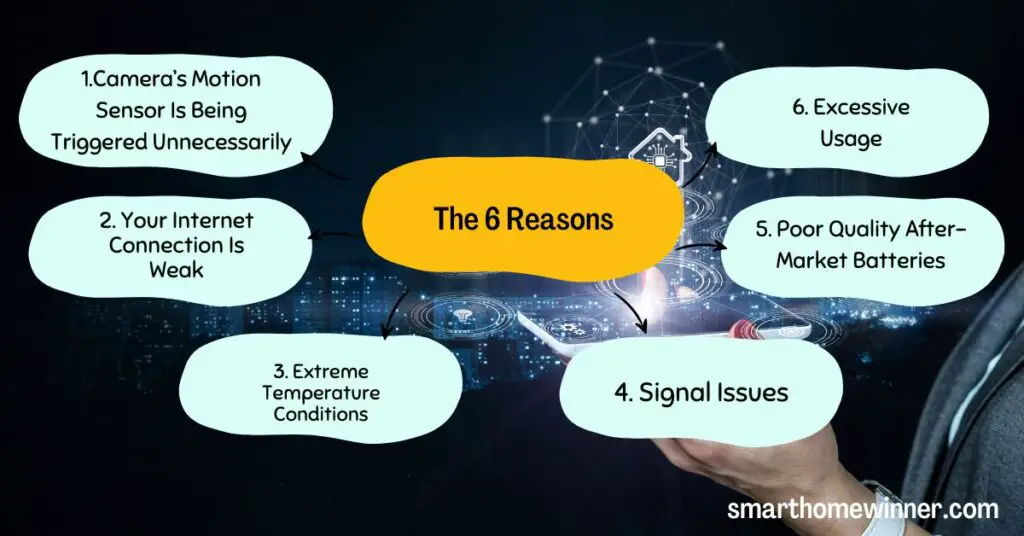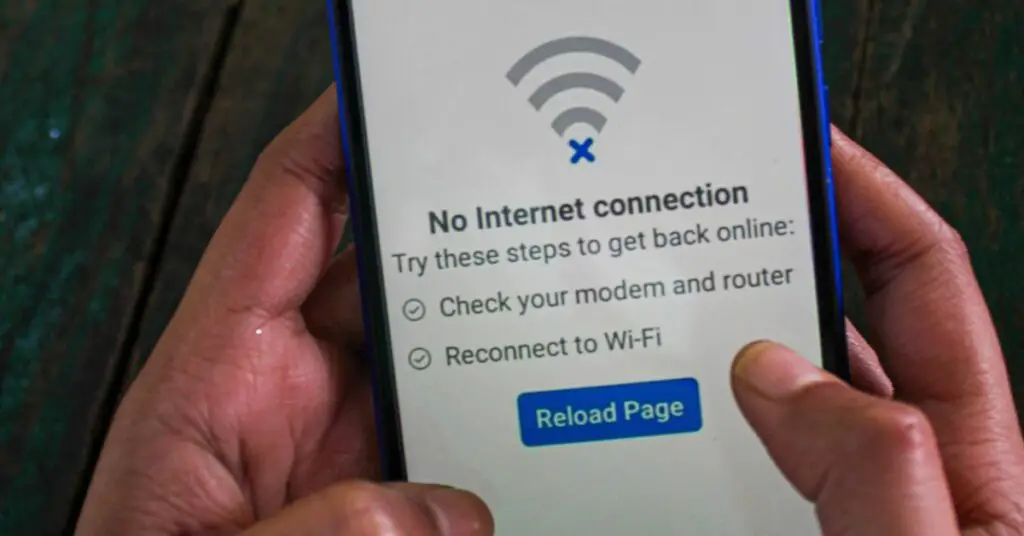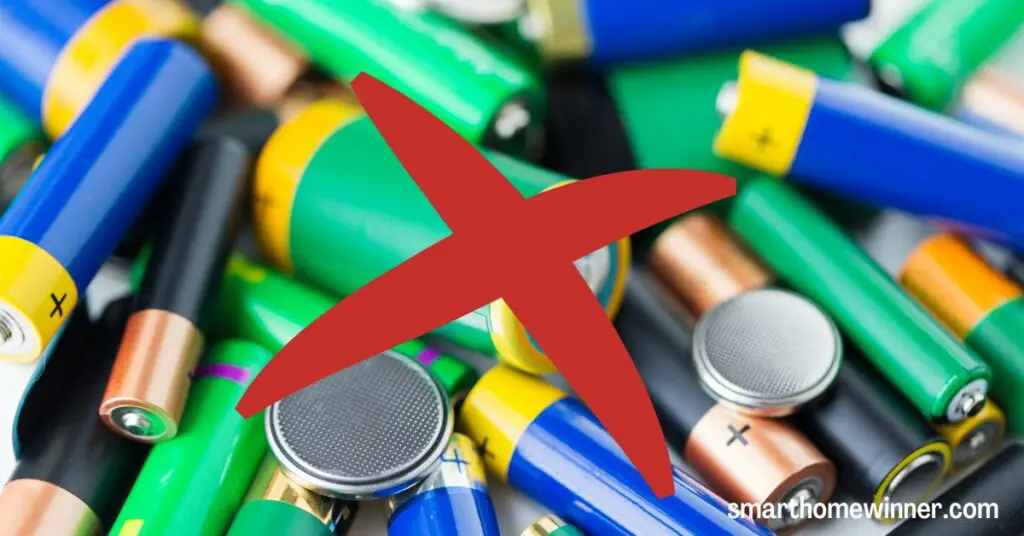So your Blink camera keeps draining battery? Well, I’d say that’s normal if the battery has outlived its lifespan. But if it hasn’t, know that this isn’t how it should behave.
You see, the Blink camera battery is designed with a lifespan of 2 years. To be precise, it should provide up to 98 hours of Live View, 43,200 seconds(720 hours) of Motion-Activated Recording, and 80 hours of Live View with two-way talk. Meaning it shouldn’t give you this trouble if it hasn’t outlived this lifespan. However, if it is, here are some possible explanations for that;
Why Your Blink Camera Battery Keeps Getting Drained
Here are the common possible reasons;

1. Your Camera’s Motion Sensor Is Being Triggered Unnecessarily
One of the outstanding features of the Blink camera is a motion sensor. Just as the name implies, the sensor detects the motion of humans and animals in the camera’s field of view, triggering the camera to record. It uses passive infrared (PIR) technology, which works by looking for infrared radiation in the form of body heat (a naturally emitted body radiation that all living creatures give off). So when a thief passes in its field of view, their body temperature will set off the motion alerts.
Unfortunately, this feature usually puts a strain on the battery, if in action, causing it to drain faster than expected. Its second disadvantage is that it can be easily triggered by environmental sources of heat or cold, causing false triggers that deplete the camera’s batteries for no reason.
2. Your Internet Connection Is Weak

Your Blink home security camera system relies on your home’s internet. This system works best where the internet connection is strong. If it’s weak, it’s not only the camera’s system’s core functionalities that are affected but also its batteries. Slow internet connection speeds use Blink batteries faster, causing them to drain quicker than expected.
3. Extreme Temperature Conditions
The Blink outdoor camera batteries aren’t temperature tolerant. Extreme heat or cold will quickly drain their power, significantly affecting their performance. If you are in a region that is experiencing too much hotness or coldness, your batteries could be draining constantly because of the extreme temperature conditions.
4. Signal Issues
Blink is a serious smart home technology company that manufactures a wide range of home security cameras. These include;
- Video doorbells.
- Indoor cameras.
- Outdoor cameras.
- Outdoor wireless floodlights.
- Outdoor wireless solar panel charging mounts.
- Sync modules.
Now, if you are a Blink fanatic, you can integrate numerous devices from this manufacturer into your smart home ecosystem. However, the number of devices you connect will affect the signal quality within your Blink ecosystem.
The manufacturer recommends that you have only up to 10 devices within a Blink ecosystem, using a Sync Module. This special hardware is plugged into an electrical outlet to relay commands and network details to devices in the Blink ecosystem, managing them effectively.
If you connect more than this number of devices, your Blink smart home ecosystem may grapple with weak signal issues and this may affect your batteries’ performance. Don’t forget that weak signal strengths between Blink devices will drain your batteries faster.
5. Poor Quality After-Market Batteries

Using Alkaline or rechargeable Li-Ion, Ni-Cd, or Ni-MH batteries is not advised. These batteries do not provide sufficient current for Blink products.
6. Excessive Usage
Another reason why your Blink camera batteries keep getting drained is that you could be overusing your security camera system by subjecting its features such as Live View and Motion-Activated Recording to heavy-duty or too many hours of usage.
Troubleshooting Tips For Extending The Battery Life of Your Blink Camera
The appropriate solution will depend on what’s causing the batteries to keep getting drained. Find that out first and then apply the right solution. For example, if it is;
1. Your camera’s motion sensor, which is being triggered unnecessarily: Blink recommends taking a few steps such as;
- Moving the camera to another location where there are no environmental factors that may be triggering the motion sensor.
- Increasing the retrigger time to at least 15 seconds.
2. Weak internet connection:
- Invest in a strong home internet connection with a good bandwidth (internet speeds) of 25 Mbps or above.
3. Signal Issues:
- Try moving your camera closer to the wireless router. What’s more, consider investing in the Blink Sync Module. Lastly, avoid having too many devices in your Blink ecosystem.
4. Poor quality after-market batteries:
- Replace the batteries with the batteries provided by Blink. Amazon, Best Buy, Home Depot, Lowe’s, Costco, Woot.com, QVC, Kohl’s, Target, Bed Bath & Beyond, Meijer, and Verizon are some of the places you’ll find authentic Blink batteries.
5. Extreme temperature conditions:
- A clever way to protect your Blink smart home camera batteries against the blistering cold or heat is to install the camera in a strategic location. Remember that the Blink security camera has its battery inserted into the bottom of the camera unit. So where you install the camera will directly affect the battery’s temperature. If you live in a cold region, be sure to install your outdoor camera near a hot place like the fireplace or chimney. If you live in a hot place, ensure that you put up your camera in a cooler place away from direct sunlight. I’d choose a shady area of the house with a great view of the house’s exterior.
6. Excessive usage:
- Avoid subjecting your Blink camera to excessive usage. Use battery-consuming features such as Live View and Motion-Activated Recording moderately.
Final Thoughts
The Blink home security camera comes with strong batteries that ideally should serve you well for at least two years. That’s their average lifespan. If your Blink batteries haven’t outlived their lifespan, but they are already draining faster than expected, a few things can be blamed for that. These include;
- Your camera’s motion sensor could be getting triggered unnecessarily.
- Your internet connection could be weak.
- Extreme temperature conditions.
- Signal issues.
- Your after-market batteries could be of poor quality.
- Your usage of the battery-consuming features of the Blink camera system could be excessive.
